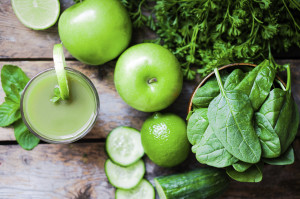7 Ways to Save Money on Smoothie and Juicing Ingredients
- Published: Sunday, April 17th 2016
- in Nutrition
The problem: Staying in the healthy lane can get pricey. Buying organic always cost more, and having to toss spoiled produce hurts the heart and the pocket. The solutions: Snag ingredients that last longer, pay attention to juicing volume yields, and don’t be afraid to freeze individual items.
Don’t hesitate to peruse the “close to spoiling” section: Some grocery stores have a shelf dedicated to produce that is almost “unsellable.” These items are often half-off the retail price; as long as you plan on using them within 24-36 hours, you won’t have to worry about consuming bad ingredients.
Don’t be afraid to freeze certain purchases: This especially holds true for produce that spoils quickly. For one, frozen bananas are a smoothie’s best friend; they add an ice cream-like texture and coolness to a blend without the watered-down taste that sometimes comes from misused ice. When the bananas met your desired ripeness, peel off the skin and put the remaining fruit in a freezer bag.
Spinach and kale also spoil quickly, and freezing them for a smoothie dilutes their bitterness and gives them an icicle-like consistency: Their new texture also breaks down easier in the blender.
Stock up on volume-yielding but cheaper ingredients when juicing: Meeting volume needs during juicing can be tricky, and packing in a ton of leafy greens can get expensive. Veggies like celery and romaine hearts are cheaper than kale and other greens, so buying them at a higher ratio will give your juices more volume without breaking the bank. Celery and romaine hearts also carry milder flavors, so they won’t make the juices bitter; using more of these will allow you to spend more on flavors you enjoy. Prepacked carrot bundles, cucumbers, bagged apples, lemons, and limes also yield generously.
Buy out of season produce frozen: Fruits retailing out of season will cost more. Consider buying summer fruits like berries in frozen packets, but always read the label for added sugars and preservatives. The packaged produce is picked at peak harvest, so in many cases, they’re as good as good could get.
Cheat a little with pre-packed juices: Get to know the juices in the supermarket and make sure to read their labels: Avoid high sugar products and those with strange additives. Look for products that might be harder to make at home, like beet juices.
Adding liquid to smoothies makes them easier to drink and helps moisten and break apart produce fibers. Adding pre-packed juice selections to fresh juice will contribute to meeting drinkable volumes and allow for flavor and portion control.
Substitute your liquid base with brewed tea or coffee: If juices and smoothies are part of your daily routine, but you still have to sip your coffee or tea separately, consider adding the latter to your favorite concoction to save time and money. Coffee or espresso goes great with a banana, almond milk, and almond butter smoothie. Brewed green tea complements citrus notes in juices while also helping meet those desired juicing volumes. Using tea or coffee as a liquid base substitute can decrease the need for accessory sweeteners, sugars, and creamers, subsequently cutting down your grocery list.
Don’t trust your shopping skills? Look into a local produce delivery service with a juicing option: These services send bundles by serving sizes, note what spoils soonest, and often include recipes and serving suggestions. Delivery services will help you track what you’re spending on a monthly basis, allowing for proper budgeting and lessening supermarket fatigue.




